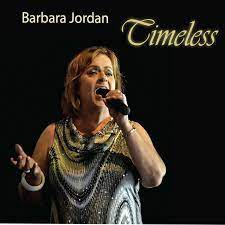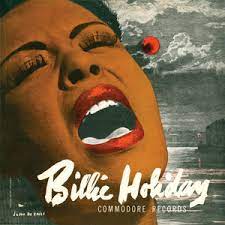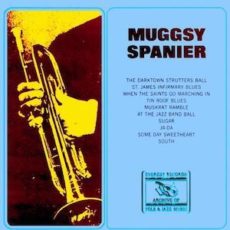
Daily Dose Of Jazz…
Örjan Kjellin was born on July 21, 1944 in Ljungby, Sweden and didn’t pick up the clarinet until the age of 15 and two years later formed his first band in partnership with pianist Lars Edegran. The band played music in the New Orleans style. He made his first records in his native Sweden at the age of 17.
Moving to New Orleans, Louisiana in 1966 he became a regular performer at several leading jazz venues including Preservation Hall. In 1968 he was a founder member of the New Orleans Ragtime Orchestra. He also led his own bands in the city including, in 1970, a band which held a residency at the Maison Bourbon Club. Two years later he formed the New Orleans Joymakers.
He recorded with several veteran New Orleans musicians including Josiah ‘Cié’ Frazier, Preston Jackson, Jim Robinson, Jabbo Smith, Zutty Singleton and Kid Thomas Valentine. In 1978, Örjan played with NORO for the soundtrack of the movie Pretty Baby. The following year he appeared in New York City as musical director, co-arranger and on-stage clarinetist with the stage musical One Mo’ Time.
In the early 80s he appeared with the same show during its long and successful run in London’s West End. Kellin has toured extensively with his own bands and with bands formed largely from New Orleans veterans. In 1992 he made his first solo tour of the UK.
Clarinetist Örjan Kjellin, a gifted and highly musical player who is known to the jazz world as Orange Kellin, continues to fan the flames of the music of New Orleans.
More Posts: arranger,bandleader,clarinet,history,instrumental,jazz,music

Daily Dose Of Jazz…
Barbara Jordan was born on July 13, 1951 in Montreal, Canada and when she was in her last year of high school she realized her singing ability. Her high school music teacher, Iwan Edwards, encouraged her to audition for the lead role of Laurie in the musical Oklahoma. Getting the part she received her first lessons in stage presence and delivering a song. She joined the high school choir, and took a vocal music class in her last year of high school.
Joining an acapella choir outside of school, she also spent five years in this choir performing around Montreal and touring Western Canada and competed in the Eisteddfod in Wales. Her professional musical career began as a folk singer prior to becoming a multi-lingual vocalist with several leading disco, pop and country/western bands in and around the Montreal area.
Settling in Toronto, Canada she has acquired a reputation over the years singing traditional and swing. She has continuously performed in clubs around the Toronto area, New York, and New Orleans, as well as at various jazz festivals in Ontario, Montana, St. Petersburg and Sarasota, Florida; Newcastle, England and Paris, France.
Trad jazz, dixieland and swing vocalist Barbara Jordan, whose influences were Mildred Bailey, Peggy Lee and Lee Wiley, continues to lead her quartet and appear regularly.
More Posts: bandleader,history,instrumental,jazz,music,vocal

Daily Dose Of Jazz…
James Archibald McLin was born in Brooksville, Florida on June 26, 1908. He started on piano before picking up the banjo, then later the guitar. He played locally in Florida before relocating to New York City in 1928. He played both guitar and banjo in the early 1930s for James P. Johnson, Ward Pinkett, and Roy Eldridge.
Later in the decade he recorded with Willie “The Lion” Smith, Buster Bailey, Midge Williams, and Billie Holiday. In the early 1940s he worked with Sidney Bechet, Dave Nelson, and Claude Hopkins, then played trombone and mellophone in a military band while serving in the United States Navy during World War II. After his discharge he worked again with Hopkins and played guitar for The Ink Spots.
Banjoist and guitarist Jimmy McLin transitioned on December 15, 1983 in St. Petersburg, Florida.

Daily Dose of Jazz…
Nappy Lamare was born Joseph Hilton Lamare on June 14, 1905 in New Orleans, Louisiana. He got his nickname from his friend, Eddie Miller, because he had curly hair. He started playing trumpet but picked up the banjo when he was thirteen and weeks later he was a member of the Midnight Serenaders. During his teen years he worked with Sharkey Bonano, Monk Hazel, and Johnny Wiggs. In 1925 he toured in California with Johnny Bayersdorffer, then recorded for the first time two years later with the New Orleans Owls.
A move to New York City had him playing mostly guitar instead of banjo and he became a member of the Ben Pollack Orchestra and sang on Two Tickets to Georgia. Lamare remained with the band until 1942, performing on records and films, sometimes as a vocalist. He moved to California and spent the rest of his career playing Dixieland as leader of the Louisiana Levee Loungers, then the Straw Hat Strutters in the 1940s and 1950s. The Strutters appeared in the movie Hollywood Rhythm and on the weekly TV variety show Dixie Showboat.
The latter part of his career he spent in reunions with Bob Crosby, performing at Disneyland, and touring with the World’s Greatest Jazz Band. He played guitar, banjo, and sang until his transition at the age of 82 on May 8, 1988.
More Posts: bandleader,banjo,guitar,history,instrumental,jazz,music,vocal

Daily Dose Of Jazz…
Don Murray was born on June 7, 1904 in Joliet, Illinois and attended high school in Chicago, Illinois. In his teens he made a name for himself as one of the best young jazz clarinetists and saxophonists in the city. In 1923 he recorded with the New Orleans Rhythm Kings and though he was not a regular member of the band, he was a friend who sometimes sat in with them.
Murray made early recordings with Muggsy Spanier before joining the Detroit, Michigan based band of Jean Goldkette, with whom he remained until 1927. It was here that he mentored the young Jimmy Dorsey.
After a brief stint with Adrian Rollini’s band, during which he contributed to several highly regarded recordings by Bix Beiderbecke, he was hired by Ted Lewis. He can be heard in the 1929 Ted Lewis film Is Everybody Happy?
>Suffering injuries sustained in a freak automobile accident where Don was standing on the running board of a moving roadster and fell, striking the back of his head on the pavement. Immediately hospitalized with serious head injury, clarinetist and saxophonist Don Murray transitioned at the age of 24 on June 2, 1929 in Los Angeles, California.
More Posts: clarinet,history,instrumental,jazz,music,saxophone



